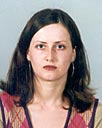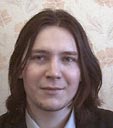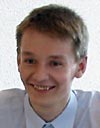Irina NASTEVA
The University of Manchester
irina@hep.man.ac.uk

I am currently in the second year of my PhD, working on the ATLAS experiment. I spent one year doing detector development for the ATLAS endcap silicon tracker (SCT). This included thermal simulations of the performance of the cooling system: studying different designs for the cooling block of SCT modules. I also performed analysis of the common-mode noise in the silicon tracker, using data from single modules (at Manchester), as well as from a system of several modules working together in conditions similar to the ATLAS experiment (at the SCT systemtest at CERN). Now I am involved with the development of very forward proton taggers (Roman pots) for diffraction studies at ATLAS. I am working on a study of the acceptance and resolution of Roman pots. This includes simulations of diffractive processes and tracking diffracted protons along the LHC beam lines, far from the interaction point.
Kirill NIKOLAEV
Joint Institute of Nuclear Research
Kirill.Nikolaev@cern.ch

For my Ph.D. thesis I'm working on ATLAS, one of the four detectors which will be build on LHC at CERN. I have completed analysis of simulation of Higgs decay to four muons with implementation of background processes and minimal bias events. This includes of study of modern software of ATLAS experement. Now I'm working on simulation studies of other physics processes at LHC.



